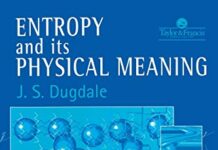
Ebook Info
- Published: 1995
- Number of pages: 256 pages
- Format: PDF
- File Size: 5.58 MB
- Authors: J. S. Dugdale
Description
The theory of metallic conduction has, until recently, been confined to crystalline metals with atoms in regular arrays. The discovery of solid amorphous alloys led to an explosion of measurements of their electronic properties, and the emergence of a range of interesting low temperature phenomena. The book describes in physical terms the theory of the electrical conductivity, Hall coefficient, magnetoresistance and thermopower of disordered metals and alloys. The author begins by showing how conventional Boltzmann theory can be extended and modified when the mean free path of the conduction electrons becomes comparable with their wavelength and interionic separation. Dugdale explores the consequences of this and tests the theory by applying it to experimental data on metallic glasses. Designed as a self-contained review, the book will appeal to nonspecialist physicists, metallurgists and chemists with an interest in disordered metals.
User’s Reviews
Editorial Reviews: Review “…the important ideas and experiments in this book are effectively explained in understandable physical terms and backed up with straight forward calculations. It succeeds in describing the potentially daunting theory of transport in disordered conductors in a highly intuitive way that will appeal very much to beginning graduate or advanced undergraduate students or interested non-experts in physics, materials science, chemistry, or electrical engineering.” Nathan Israeloff, Materials Research Bulletin Book Description An introductory treatment of the electrical properties of disordered metals, first published in 1995. From the Back Cover The theory of how metals conduct electricity has, until recently, been confined to metals that are crystalline with the constituent atoms in regular arrays. The discovery of how to make solid amorphous alloys led to an explosion of measurements of the electronic properties of these new materials, and the emergence of a range of interesting low-temperature phenomena. The book describes in physical terms the theory of the electrical conductivity, Hall coefficient, magnetoresistance and thermopower of disordered metals and alloys. The author begins by showing how conventional Boltzmann theory can be extended and modified when the mean free path of the conduction electrons becomes comparable with their wavelength and interionic separation. The consequence of this is explored and the theory tested by application to experimental data on metallic glasses. Designed as a self-contained review, the book will appeal to non-specialist physicists, metallurgists and chemists with an interest in disordered metals. Read more
Reviews from Amazon users which were colected at the time this book was published on the website:
⭐Not found.
⭐Not found.
Keywords
Free Download The Electrical Properties of Disordered Metals (Cambridge Solid State Science Series) 1st Edition in PDF format
The Electrical Properties of Disordered Metals (Cambridge Solid State Science Series) 1st Edition PDF Free Download
Download The Electrical Properties of Disordered Metals (Cambridge Solid State Science Series) 1st Edition 1995 PDF Free
The Electrical Properties of Disordered Metals (Cambridge Solid State Science Series) 1st Edition 1995 PDF Free Download
Download The Electrical Properties of Disordered Metals (Cambridge Solid State Science Series) 1st Edition PDF
Free Download Ebook The Electrical Properties of Disordered Metals (Cambridge Solid State Science Series) 1st Edition

